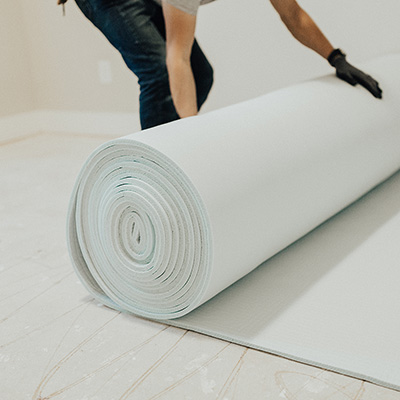How to Install a Stair Runner

Last updated September 7, 2023
A colorful carpet runner cascading down a flight of stairs is more than just a decor upgrade. Installing carpet on stairs helps protect them from damage and wear. A stair runner can also help muffle the noise that people make as they go up or down the stairs.
This guide will teach you how to install a stair runner.
Difficulty:
Intermediate
Duration:
2-4 hours
Table of Contents
Measure the Stairs
Mark the Center of the Stairs
Install Carpet Pads
Install Runner Carpet
Finish Off the Project
Add Stair Rods (Optional)
Measure the Stairs
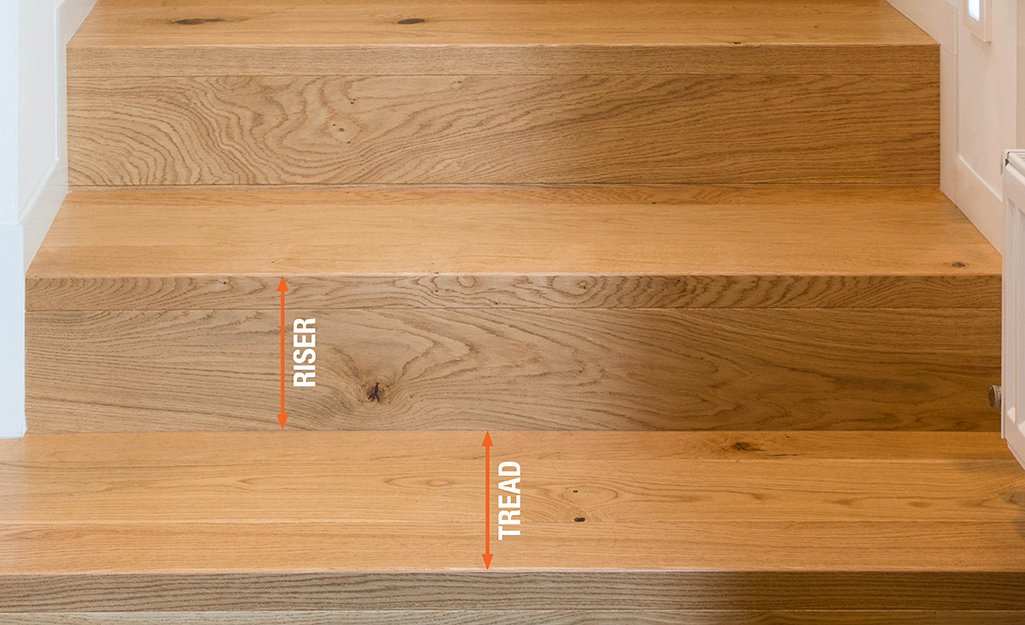
Take measurements of the stairs before selecting your runner area rug to be sure the rug will have sufficient length and width.
- As you figure out how to measure stairs for carpet, start by selecting one stair tread. The tread is the top surface of the step. Measure its depth.
- Then measure the height of the riser, which is the vertical part of the step.
- Multiply the height by the number of risers and the depth by the number of treads of the staircase.
- Add the two figures together then add 6 inches to account for waste. The total is the length of the runner carpet you will need to cover the stairs.
To convert inches into feet, divide the total by 12. - If you need more than one runner, add an additional 12 inches to the total to account for seams where the two carpet pieces will join. If your staircase includes a landing, be sure to include it in your measurements.
- Stair runners are typically sold in increments of 1 foot. You will order the number of linear feet of carpet you need to cover your stairs.
Sample staircase measurements:
- Depth of stair tread: 11.5 inches
- Height of riser: 7.5 inches
- Number of treads: 13
- Number of risers: 14
7.5 (height) x 14 (number of risers) = 105
11.5 (depth) x 13 (number of treads) = 149.5
105 + 149.5 = 255.5
255.5 + 6 = 261.5 inches
261.5/12 = 21.79
The length of the carpet needed to cover these stairs is 21.79 feet. Round up for a total of 22 feet of carpet.
Mark the Center of the Stairs
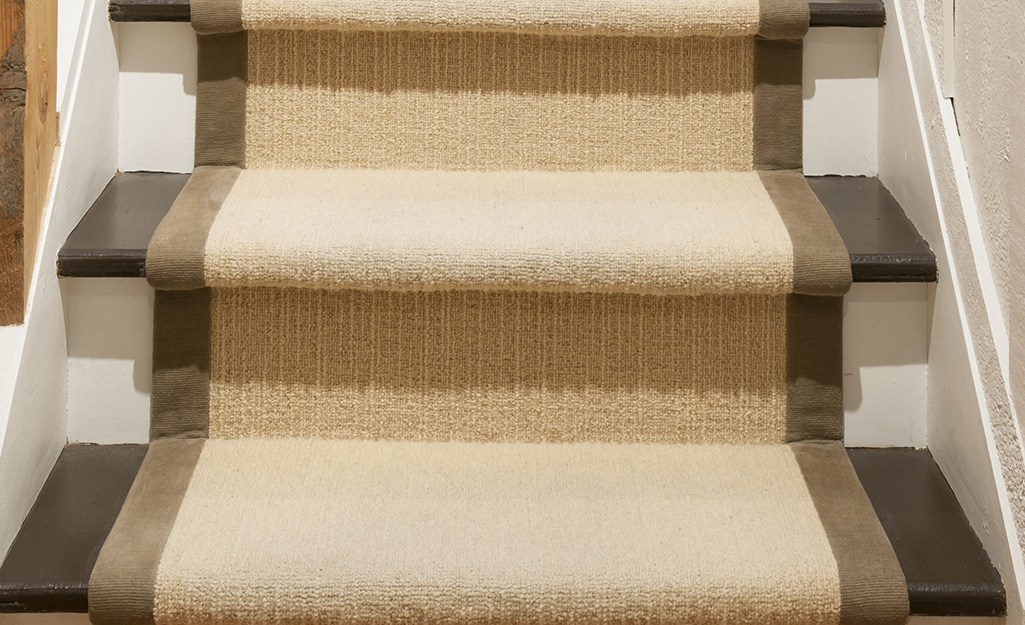
To place your stair runner properly, you will also need to figure out where the center of each stair is:
- Measure the horizontal width of the tread from end to end. Divide by 2 to find the center line and mark the measurement with a pencil.
- Line the center of the runner with the center line on the tread, then mark the tread on each side of the runner.
- Measure the exposed area of tread on each side of the runner marks to make sure they are even. Use a yardstick to repeat the same markings on each tread of the stairs.
Install Carpet Pads
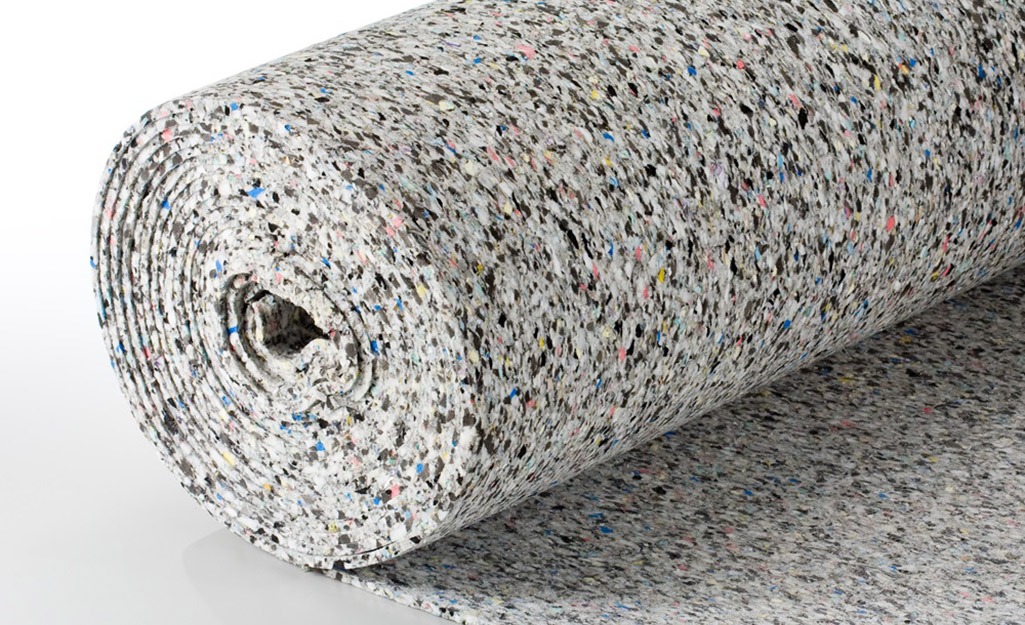
You must create a rug pad for each stair tread. Your rug padding should be narrower than your runner by at least one inch.
- Align the top edge of the rug pad against the back of the tread and use a yardstick to make sure it is straight.
- For a flat top installation, mark a cut line on the rug pad ½-inch from the front of the stair tread. Use fabric scissors to cut along the line and use the created pad as a guide. Cut as many rug pads as needed for the number of treads.
- Cut three strips of double-sided carpet tape and place them at each edge and in the middle of the carpet pad. Fold the pad in half, then line up the half mark on the top of the tread. Repeat as needed to cover all the treads on the staircase.
- For a wrap installation, mark the rug pad at 3 inches longer than the depth of the tread. Use fabric scissors to cut along the line. Then, snip off the two front corners at a 45-degree angle. Use the created pad as a guide and cut as many rug pads as needed for the number of treads.
- Center the pad on the bottom tread and align the long edge to the riser above, leaving a fingertip-width space between. Drive one staple into the center. Then, place two more staples, evenly spaced on either side of the pad.
- Smooth the pad over the tread and over the nose. Pull tight without stretching the pad, then staple the pad to the underside of the nose. Put one staple at the center line and two on either side. Trim the extra fabric with scissors. Repeat as needed to cover all the treads.
Install Runner Carpet

- Cut a strip of double-sided tape slightly shorter than the width of the rug. Press the tape along the top edge of the riser of the first tread, placing it just under the nose.
- Line up the top edge of the runner rug with the tape and press firmly. Use the staple gun to staple the rug in place. Start stapling in the center and then staple every three inches on either side. Be sure there is a staple in each of the outer edges.
- Smooth the rug against the riser, then press a bolster chisel into the rug at the crease of the next tread. Staple the rug to the bottom of the riser in the center of the rug. Then staple every three inches on either side of the runner.
Waterfall Installation
If the tread of your stairs is even with the riser, you can use the waterfall installation technique.
- Pull the rug over the next tread and staple as above.
- Continue this installation over the successive treads until you reach the end of the runner.
- Repeat the process of stapling the runner to the base of the riser as above, then continue over successive treads until you reach the last tread you can cover.
Wrap Installation
When the treads of your stairs hang over the riser a little, a feature known as the "nose" of the stair, you'll need to use the wrap installation method.
- Smooth the rug over the next tread. Use a bolster chisel to press the rug tightly underneath the nose.
- Staple the rug every three inches and be sure that the each of the outer edges is stapled.
- Continue stapling the runner to the base of the riser and underneath the nose for each stair until you get to end of the rug.
Adding a Second Runner
If the first length of rug doesn't cover the entire staircase, you'll need to use a second runner.
- After you have stapled the first runner to the bottom of the last finished riser, trim its trailing edge, leaving a 2-inch piece free to overlap.
- Overlap with the second runner, carefully aligning the sides of the two runners and pressing the finished edge against the riser.
- Staple into the second runner as above, then continue the waterfall or wrap installation process as described above until the remaining treads are covered.
Finish Off the Project
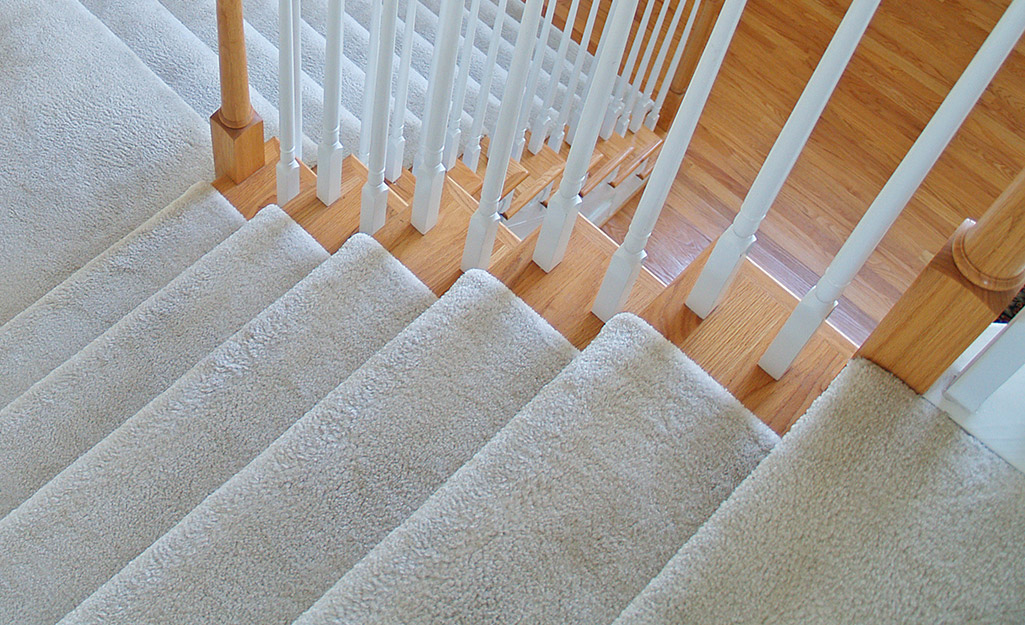
A neat edge along the last runner will give the stairs a tailored look. Finishing the edge also ensures there won't be any trailing carpet pieces that might pose a hazard after installing carpet on stairs.
- At the base of the final step, press a bolster chisel along the rug to tighten the rug and create a crease.
- Measure three inches out from the crease and mark the spot on the rug. Use a yardstick to draw a straight line across the rug at that point, then cut along the line.
- Fold the end of the runner under and press it tightly against the final riser to create a hem. Staple into place against the riser. If the final riser ends in a moulding, fold and staple the hem so that it sits above that piece.
Add Stair Rods (Optional)
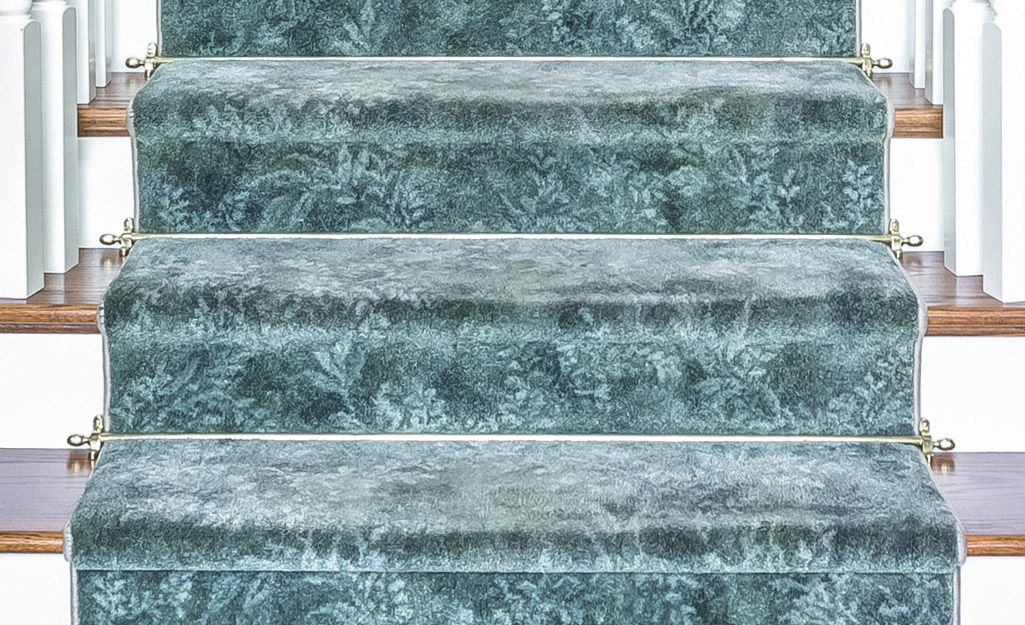
A stair rod is an attractive decorative element you can add as you learn how to install a runner on stairs. Stair rods are comprised of a long tube that attaches to a pair of brackets installed on each side of the runner. They are attached directly to the tread.
While rods aren’t required to hold the runner in place, they can be used to hide any small bumps after installing carpet on stairs. You can find stair rods in a variety of finishes and materials. Many homeowners prefer slim metal rods that accent the stair runner rug without being intrusive.
- If using decorative finials with the stair rods, attach each one to the outside edge of the corresponding rod bracket.
- Line up one bracket against either edge of the runner and slide it back until it sits in the crease where the riser and the tread meet.
- Hold the brackets in place and mark the spot where you will drill holes for the screws.
- Fit a 1/16-inch drill bit to a rotary drill and create a pilot hole at each mark.
- Screw each of the rod brackets into place.
- Press the rod into the crease on top of the carpet and secure it into the brackets.
- Repeat as needed for the other treads.
Once you’ve learned how to install carpet on stairs, you can change the look of the staircases in your home, while adding an extra layer of protection.
If you don’t want to take the time to figure out how to carpet stairs, another option is to use stair tread covers. They come in a variety of styles. Some stair tread covers have rubber backing that grips the surface of each stair. They can be put down on each stair individually without being glued or nailed down.
If you’d like to have a stair runner but aren’t able to tackle this project yourself, The Home Depot offers carpet installation services.

